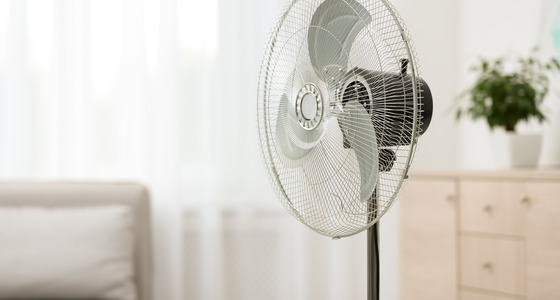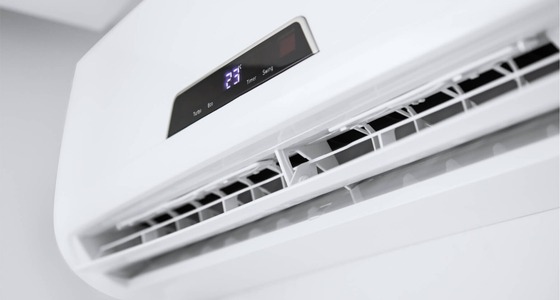Save energy and stay cool with a fan
Fans are a great option to help cool your home and can be much less expensive to operate than air conditioners.
How to use fans effectively
Using fans strategically can be a low-cost and effective way of circulating air to optimize the temperature in your home:
- If the outside temperature is cooler than inside, place a fan at downstairs windows to help bring the cool air in and another one upstairs to push the warm air out.
- If your home is on one level, position fans to draw cool air in through one window and push warm air out through another window.
- Place a portable fan near a window in the cool evening or morning hours to draw the cooler outside air into your home.
- Position a fan to face you while you're sitting or sleeping to help you feel cool.
Types of fans
Ceiling fans
Ceiling fans are the most energy-efficient fan option. They use about one-tenth the energy of an air conditioner. Rotate a ceiling fan counterclockwise in the summer to create a cooling effect and reverse that in the winter to bring warm air down. Look for ENERGY STAR® models to ensure maximum energy efficiency.
Portable fans
Portable fans, such as a tower or tabletop model, are a popular option because of their convenience. They can be moved around the home with relative ease to provide on-demand cooling. Just remember fans cool people, not rooms. A fan left on in an unoccupied room is wasting energy.
Window fans
Window fans (sometimes called box fans) are installed in open windows to move air in and out of a house. These are most efficient to circulate air in single rooms vs. a whole home. Some types will take the hot air out of the home, while others bring cold air in.
Smart fans
Smart fans, like smart thermostats, can automatically adjust to certain conditions or activities in the home. Some models turn on and off when rooms reach certain temperatures, while others detect when a room is occupied through timers or motion detectors. A smart fan can connect to a smartphone or tablet and other smart devices in the home.



